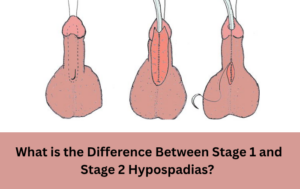Vesicoureteric Reflux (VUR) in Children

Introduction
As parents, we always strive to keep our children healthy and happy. However, sometimes, health issues arise that require our attention and understanding. One such condition that affects children is Vesicoureteric Reflux (VUR). In this blog, we will explore the causes, symptoms, and treatment options for VUR, a condition where urine flows backward from the bladder to the kidneys, potentially leading to serious health problems if left untreated.
Understanding Vesicoureteric Reflux (VUR)
Vesicoureteric Reflux occurs when the valve-like structure that normally prevents urine from flowing back into the ureters and kidneys malfunctions. This malfunction allows urine to travel in the wrong direction, leading to potential kidney damage and urinary tract infections (UTIs).
Causes of VUR:
The exact cause of VUR is not always clear, but there are some factors that may contribute to its development:
- Genetics: VUR can run in families, suggesting a genetic component.
- Congenital Defects: Children born with structural abnormalities in the urinary tract are at higher risk of VUR.
- Incomplete Development: In some cases, the valve responsible for preventing reflux may not fully develop, making it less effective.
Symptoms of VUR:
Identifying VUR can be challenging because it often presents without any noticeable symptoms. However, some signs to watch out for include:
- Recurrent UTIs: Children with VUR are more prone to urinary tract infections.
- Fevers: High fevers without an obvious cause could be a sign of a UTI associated with VUR.
- Abdominal Pain: Some children may experience abdominal discomfort or pain.
- Poor Growth: Severe cases of VUR can affect kidney function and lead to poor growth.
Diagnosis of VUR:
To diagnose VUR, doctors may use imaging tests such as a voiding cystourethrogram (VCUG) or a renal ultrasound. These tests help visualize the flow of urine and any abnormalities in the urinary tract.
Treatment Options for VUR
The management of VUR depends on its severity. Here are the primary treatment options:
- Watchful Waiting: In mild cases, especially in younger children, doctors may choose to monitor the condition closely without immediate intervention. They will typically recommend preventive measures like prophylactic antibiotics to reduce the risk of UTIs.
- Medication: Certain medications, like antibiotics, may be prescribed to prevent UTIs and control symptoms. These are often used in combination with watchful waiting.
- Surgery: For severe cases of VUR or when conservative treatments are ineffective, surgical intervention may be necessary. The surgical options include reimplanting the ureters to correct the reflux or using minimally invasive techniques.
- Lifestyle Changes: Encouraging children to maintain good hygiene practices and stay well-hydrated can help reduce the risk of UTIs.
The plan of management of a patient with VUR will be decided by a pediatric urologist after considering all factors like the age of the patient, symptoms, and reports of various investigations like renal scans. Treatment plans can vary from patient to patient
Conclusion
In conclusion, Vesicoureteric Reflux is a condition that parents should be aware of, as it can have long-term implications for a child’s kidney health. Early diagnosis and appropriate management are key to preventing complications. Dr. Apoorva Kulkarni, a specialist in children’s surgical care, can provide expert guidance and treatment options for children with VUR. Remember, regular check-ups and open communication with healthcare professionals are essential to ensuring the well-being of your child. By staying informed and proactive, parents can help their children lead healthy, happy lives.
Latest Blogs

Preputioplasty: A Safe Alternative to Circumcision for Tight Foreskin in Children

Challenges in Paediatric Laparoscopic Surgeries

Antenatal Care: Preconceptional Counseling and Care

How Neonatal Surgery Transforms Newborn Survival Rates

What is the Difference Between Stage 1 and Stage 2 Hypospadias?

